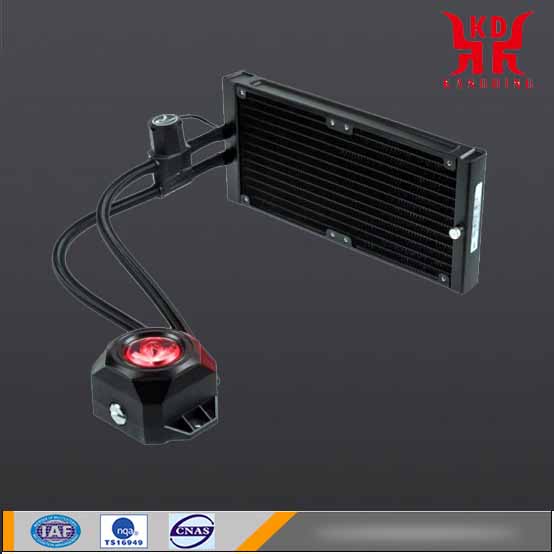
There are three forms of heat propagation: "heat conduction", "convection" and "heat radiation". The propagation of lattice vibration and the movement of free electrons in metals belong to "heat conduction", the heat transfer of fluid movement belongs to "convection", and the heat transfer through electromagnetic waves is "thermal radiation". The method developed by the ceramic industry is to use the infrared radiation of ceramic materials for heat dissipation.
The heat radiation method is to release heat when the casing is closed and thin, and the heat cannot be transferred by convection. Some technicians have known this advantage for a long time, but there are few precedents to make full use of it. However, according to Taoye, LED lighting products that use thermal radiation to dissipate heat have increased recently. Among them, a Japanese lighting appliance company applied ceramic materials to a variety of uses ranging from large LED lighting appliances such as projectors to small products such as desk lamps.
By adopting heat radiation to dissipate heat, the heat dissipation efficiency of the light projector can be improved, and no cooling fan is required. Not using cooling fans can reduce the risk of failure. Because there is no need for multiple fins, there will be no dust accumulation, saving the trouble of cleaning. In the manufacture of table lamps, the ultra-thin design of the shell near the light source was successfully realized by using heat radiation to dissipate heat.
What is very interesting is that the ceramic circuit boards provided by the ceramic industry to lighting appliance companies are basically the same whether it is a large product or a small product. The ceramic circuit boards are all horizontally long hexagons with a length of 55mm & TImes; a width of 30mm and a thickness of about 6mm. Fix the multi-chip LED module on the circuit board with screws. High-power LED modules with a maximum power of 19W can be used. Large products use multiple screws to fix the LED module on the ceramic circuit board, and small products use one. The ceramic circuit board is made of aluminum oxide with a purity of 99.7%, and the heat emissivity is 0.97. The surface is smooth, the average roughness is 0.5μm, and the LED module is directly fixed on the surface of the circuit board with screws.
Compared with metal circuit boards and printed circuit boards, ceramic circuit boards face high cost. However, if the effect of mass production can be improved with the generalization of ceramic circuit boards, the increase in manufacturing costs can be curbed to some extent. This requires an increase in the number of mass production, but as of now, mass production has not yet started, because enterprises are afraid of the high cost of ceramic circuit boards.
In response to this situation, the ceramic industry said that after the use of ceramic circuit boards, the total cost of heat dissipation components such as circuit boards and heat sinks used to install LED modules can be reduced. It is because lighting appliance companies that use ceramic heat dissipation have compared products that use ceramic circuit boards with products that use traditional heat dissipation designs, and after considering the total cost, they choose ceramic circuit boards without exception. Whether the idea of reducing the total cost can be popularized. The degree of popularity can be predicted by whether LED lighting fixtures with simple shapes increase.








